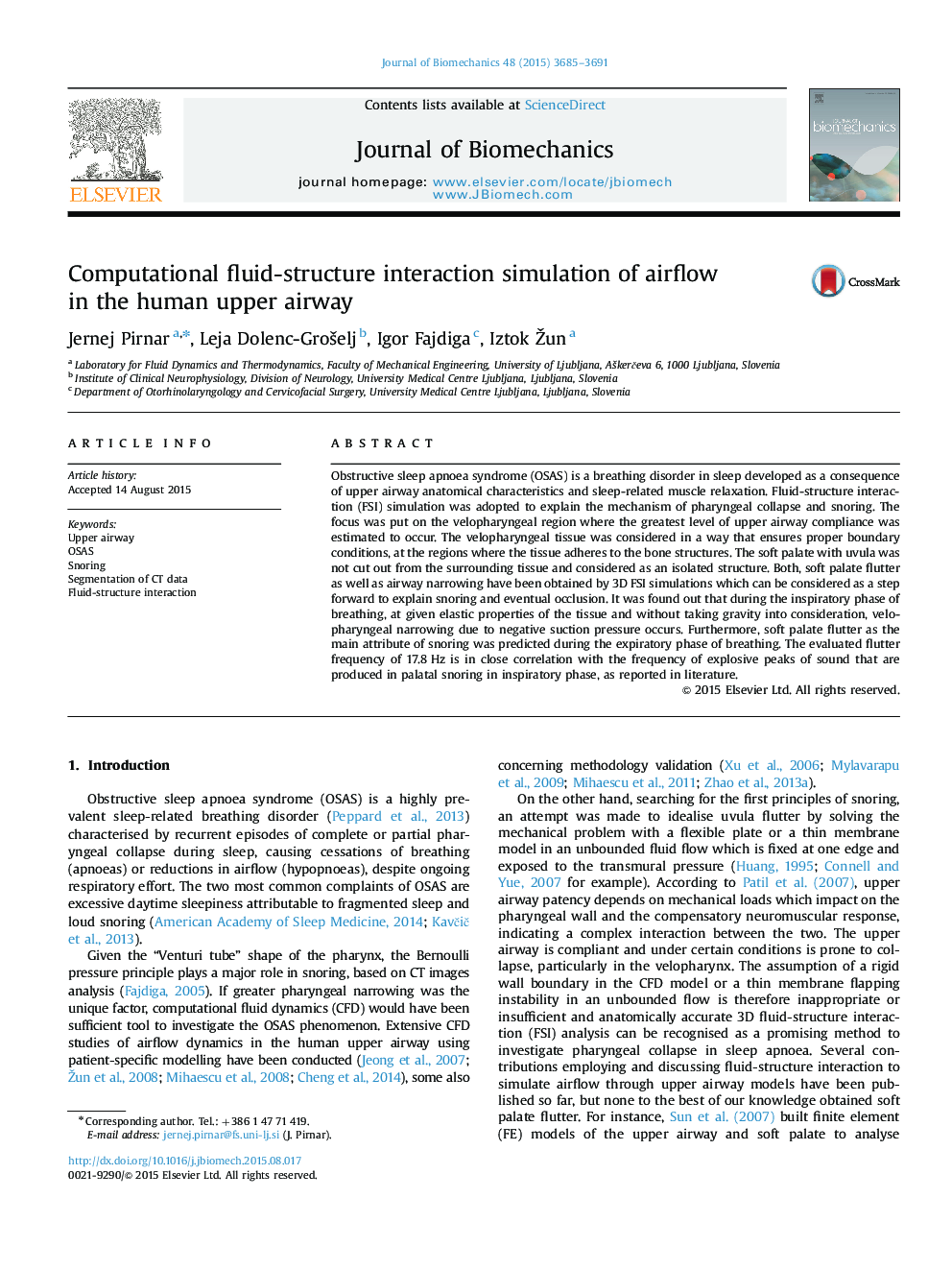| Article ID | Journal | Published Year | Pages | File Type |
|---|---|---|---|---|
| 871873 | Journal of Biomechanics | 2015 | 7 Pages |
Obstructive sleep apnoea syndrome (OSAS) is a breathing disorder in sleep developed as a consequence of upper airway anatomical characteristics and sleep-related muscle relaxation. Fluid-structure interaction (FSI) simulation was adopted to explain the mechanism of pharyngeal collapse and snoring. The focus was put on the velopharyngeal region where the greatest level of upper airway compliance was estimated to occur. The velopharyngeal tissue was considered in a way that ensures proper boundary conditions, at the regions where the tissue adheres to the bone structures. The soft palate with uvula was not cut out from the surrounding tissue and considered as an isolated structure. Both, soft palate flutter as well as airway narrowing have been obtained by 3D FSI simulations which can be considered as a step forward to explain snoring and eventual occlusion. It was found out that during the inspiratory phase of breathing, at given elastic properties of the tissue and without taking gravity into consideration, velopharyngeal narrowing due to negative suction pressure occurs. Furthermore, soft palate flutter as the main attribute of snoring was predicted during the expiratory phase of breathing. The evaluated flutter frequency of 17.8 Hz is in close correlation with the frequency of explosive peaks of sound that are produced in palatal snoring in inspiratory phase, as reported in literature.
